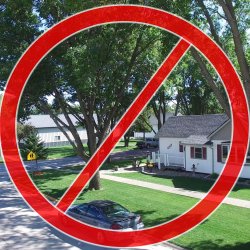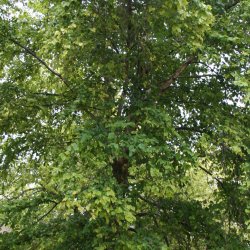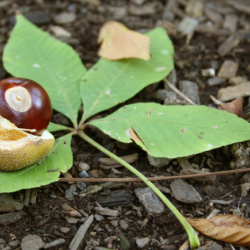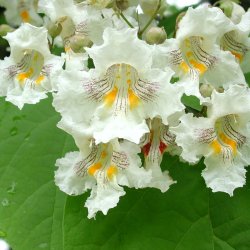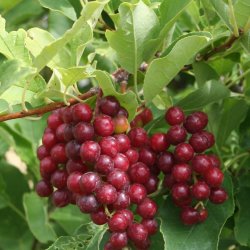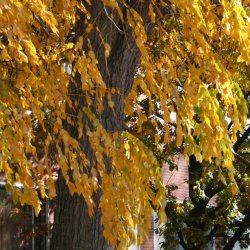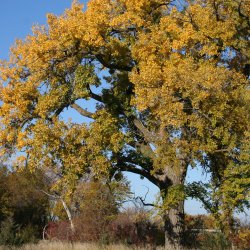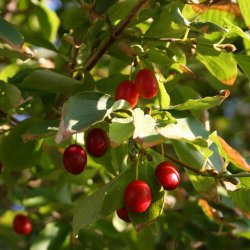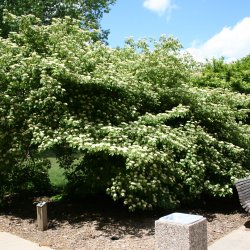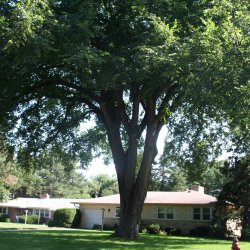Ash Deciduous
Fraxinus sp.
Green ash is abundant in Nebraska’s native woodlands and was commonly planted throughout the state after Dutch elm disease. However, the introduction of emerald ash borer has left the species in peril. We no longer recommend planting any native ash trees in Nebraska.
Birch, River Deciduous
Betula Nigra
River birch is a fast-growing, medium-sized tree native to much of the east and southeast US and best known for its exfoliating, salmon-colored bark. It is frequently used as a landscape tree in eastern Nebraska.
Buckeye, Ohio Deciduous
Aesculus glabra
The buckeye tree is named for its round, shiny-brown nuts born
in a spiny capsule that somewhat resembles a “buck's eye”.
Catalpa, Northern Deciduous
Catalpa speciosa
Northern catalpa is primarily used today as a large ornamental shade tree. It is widely planted in urban areas as a street and lawn tree. Conservation uses include plantings in mined-land reclamation projects and shelterbelts.
Chokecherry Deciduous
Prunus virginiana
Chokecherry is common throughout much of the US and southern Canada and grows across Nebraska. It is typically a suckering, multi-stemmed large shrub, but can be a small tree reaching up to 25’ tall.
Coffeetree, Kentucky Deciduous
Gymnocladus dioicus
Kentucky Coffeetree is one of the best trees for Nebraska. This native, pest free tree is an alternative to ash and elm which have been ravaged by insects and disease. It also has a nice golden-yellow fall color, don't you think?
Cottonwood, Eastern Deciduous
Populus deltoides
Most people can relate nostalgically to large cottonwoods that shaded favorite camping or fishing spots, that whispered their rustling leaves in the slightest breeze, and which released their cottony seeds like a snow squall on late spring days.
Dogwood, Corneliancherry Deciduous
Cornus mas
Although the origin of the name “dogwood” is not completely understood,
it had been referred to as the “dog tree” since the 1500s. Most dogwoods are shrubby in nature, but a few can become small
trees.
Dogwood, Pagoda Deciduous
Cornus alternifolia
The species is native to forest edges in the northeastern US from Minnesota to Maine and south to the mid-Atlantic states.
Elm, American Deciduous
Ulmus americana
For the first hundred or so years after settlement, American
elm dominated community skylines across the state especially along streets where its tall, arching habit provided leafy
canopies for blocks at a time.
